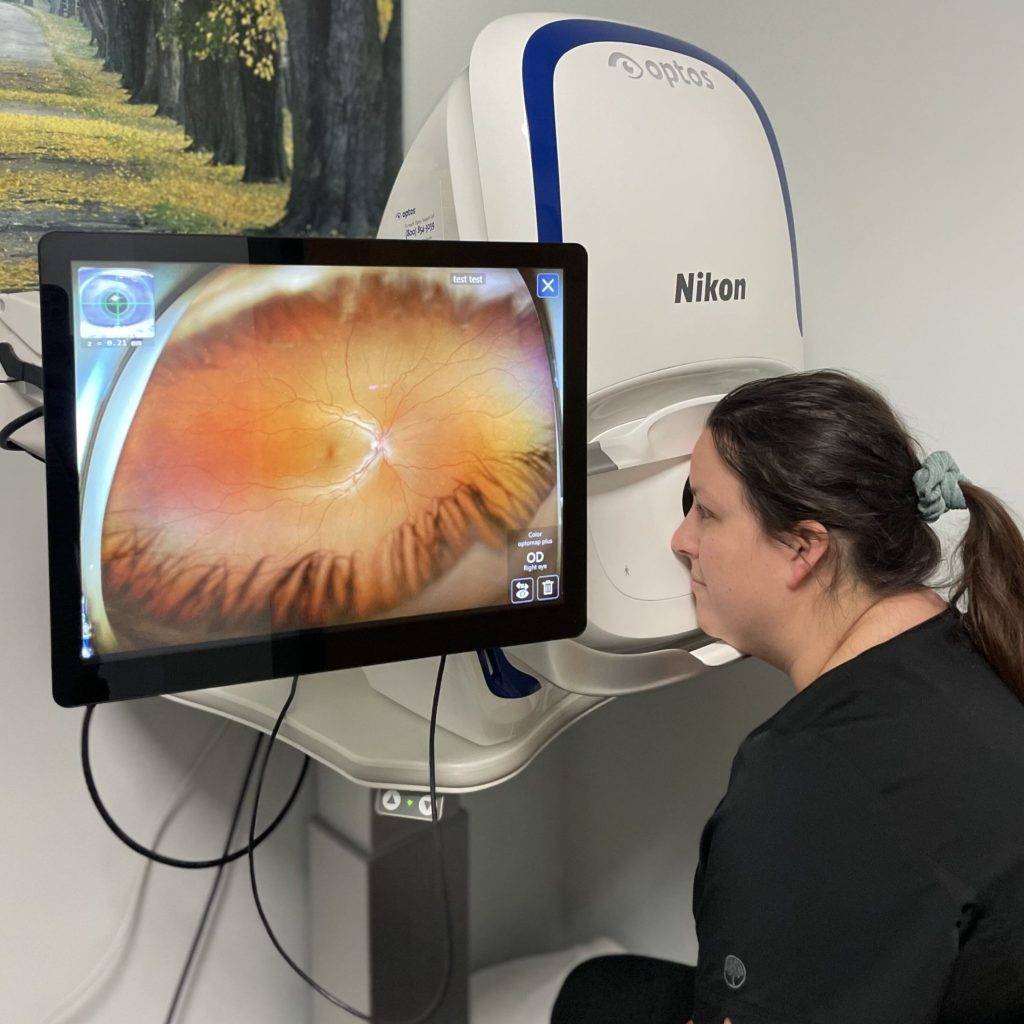Optos Non-Dilated Eye Exams – Why We Are Changing Our Position:
We are Now Offering Some Patients Optos Imaging as an Alternative to Dilation:
The Optos California RGB Ultra-Wide Field instrument is right for some of our patients in certain circumstances. This non-invasive imaging instrument captures high-resolution photos of the retina. We previously spoke out against earlier Optos versions as a dilation alternative, but retinal imaging technology has advanced considerably over the past decade. That’s why we are offering Optos now.
What Changed:
Traditional dilation allows the eye doctor to see about 90% of the retina and the back of the eye. The Optos California RGB instrument allows the doctor to see about 82% of the retina in a single capture. This allows visibility of 50% more of the retina compared to other imaging devices. The new Optos version uses Red, Green, and Blue (RGB) imaging, unlike older versions, which did not include blue laser light. The addition of blue laser provides a more natural, true-to-life color representation of the retina. An October 2025 study published by the National Library of Medicine shows that RGB imaging is “significantly superior” to previous versions.

How We Are Using the Instrument:
For patients with generally healthy eyes who come to us annually for routine vision exams, we are offering Optos non-dilated exams every other year, with traditional dilation in alternate years. This applies to patients with these refractive conditions:
- Low to moderate Myopia (nearsightedness)
- Hyperopia (farsightedness)
- Presbyopia (age-related farsightedness)
- Astigmatism (blurry vision due to uneven corneal or lenticular curvature)
Not a Dilation Substitute:
Optos imaging provides meaningful clinical data but is not equivalent nor a substitute for a dilated eye exam. To ensure our patients receive the best possible care, we do not offer Optos non-dilated eye exams to patients with medical eye conditions, including but not limited to glaucoma, diseases of the retina, vitreous or macula, cataract, corneal conditions, diabetic eye disease, and more.
We require our regular eye care patients to have traditional dilation between Optos imaging sessions.
Cost: For patients electing Optos, a $45 fee, not covered by health insurance, is due at the time of the exam.






